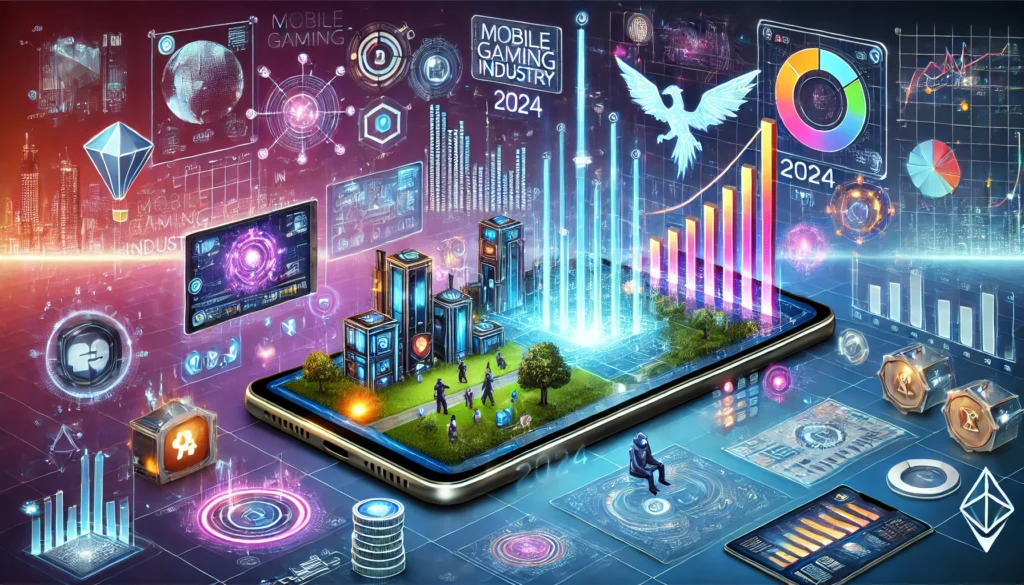A Brief Overview of the Mobile Gaming Industry

A Brief Look at the Mobile Gaming Industry
The mobile gaming industry continues to grow rapidly, with analysis, trends, and statistics. Many people who seek social interaction and want to spend their free time in an enjoyable way are turning to gaming more than ever.
Research firm Newzoo predicts that mobile games will earn $93.2 billion in 2021, a 7.3% increase compared to the previous year. In support of this finding, analysts at another research firm, Variety, state that the global film industry’s box office revenue was $21.4 billion in 2021, and the global music market’s wholesale revenue reached approximately $57.05 billion in the same year. In other words, the mobile gaming industry generated more annual revenue than the music and film industries combined. This fact is quite remarkable. Let’s examine with more statistics what trends the mobile gaming industry will show in 2022.
Mobile Gaming Industry Statistics
App Annie reported that consumer spending on games reached $116 billion in 2021.
As of August 2021, there are over 4.7 million apps and games available worldwide on the Apple App Store alone.
According to Statista, mobile games account for 57% of total gaming revenue.
According to Adjust, the mobile gaming market is projected to reach $272 billion by 2030.
APAC is the largest and fastest-growing regional market for the mobile gaming industry, according to Unity.
According to Adjust, 21% of Android apps and 25% of iOS downloads are in the gaming category.
Google Play revenue continues to outpace iOS App Store revenue, rising from 13.2% to 19.6%.
Mobile Games
Mobile Gaming Industry
The latest data from App Annie shows that hyper-casual games are the fastest-growing genre among mobile games, with over 3.5 billion downloads worldwide in Q3 2021. In addition, action, puzzle, and simulation games are among the most popular genres in the overall category.
Mobile gaming represents 50% of user acquisition advertising budgets for marketers. The APAC region accounts for 64% of total spend. In comparison, e-commerce, which ranks second, only has a 16% share. Mobile gaming is generating significant revenue over time, continuing to grow and innovate, which provides the opportunity to support user acquisition (UA) activities.
Popular Mobile Games of 2021
According to App Annie data, the 10 most downloaded mobile games in the US as of 2021 are:
Bridge Race (Supersonic)
Hair Challenge (Rollic)
Count Masters (Ascella Mobile)
Create Your Own Phone Case (Crazy Labs)
High Heels (Zynga)
Go Bola (Supersonic)
Stacky Dash (Ultimate)
DOP 2: Delete an Episode (SayGames)
My Talking Angela 2 (Outfit7)
Sculpt People (Crazy Labs)

Mobile Gaming Industry Assessment and Trends in 2022
With IPOs, iOS 14, legal conflicts, and striking new business models, 2021 has been a dynamic and record-breaking year for the gaming industry. There are important trends to consider as you prepare for 2022.
1. The Evolving Play-to-Earn Concept
Play-to-earn (P2E) stands out as the most effective business model since pay-to-play and the more recent free-to-play model. P2E games created with blockchain technology allow players to earn real income in their crypto wallets, while also offering the opportunity to resell their assets whenever they want.
On the other hand, thanks to the P2E model, users obtain or purchase currencies and resources that they can trade or sell with other players. Outside of the game, these assets can be sold as cryptocurrency and later converted into fiat currency.
Some games have managed to stand out in the P2E model. NFT-based applications have become a significant source of income for many people.
2. The Need for Branding
It is clear that privacy policies make it difficult to acquire mobile users. As user acquisition (UA) becomes more complex, building a brand and community around your app, driving downloads, and cultivating user loyalty is becoming more important than ever.
As brand building becomes a focal point, more alternatives for community management will emerge. This will increase user engagement and create a game that offers a more robust sharing experience between players.
3. More Companies Join the Race
Apple Arcade and Google Play Pass are platforms where mobile games are offered on a subscription basis and with payment options. Netflix has also moved away from its core business model by developing games that are available on iOS devices worldwide.
4. Evolving Dynamics in Retail Ecosystems
Epic proposed a universal app store with lower commission rates because it believes Apple has excessive control over app developers.
The conflict between stores and developers continues to be evident in the PC market. For example, Steam has banned blockchain technology, including NFTs, for games on its platform. On the other hand, Epic Games has decided to open its doors to NFTs and cryptocurrencies.
5. The Development of the Metaverse
The term “metaverse” has become a popular concept in the past year. According to Matthew Ball, although the effects of the metaverse on the industry are not clear, the metaverse:
Be stable,
Stay synchronized and active,
Access is available to simultaneous users without restrictions,
Create a fully active economy.
In 2022, the game will be integrated with the metaverse and offer more innovative in-game experiences such as Fortnite concerts.
6. Industry Convergence
The gaming industry has seen gradual growth over the past 5-10 years, driven by the development of high-tech solutions such as ad networks and measurement tools that support the gametech ecosystem.
As industry tools mature, large players in the industry have turned to acquiring smaller, high-performance companies to diversify their offerings and provide developers with a single platform to manage and grow their app pipeline.
For example, ironSource listed in 2021 and acquired Luna Labs, Soomla, Bidalgo, and Tapjoy. AppLovin acquired MoPub and Adjust (and Machine Zone in 2020). Liftoff and Vungle are merging, while GameRefinery acquired AlgoLift, JetFuel, and Tresensa. More mergers and acquisitions are expected in 2022.